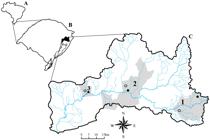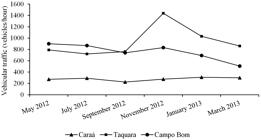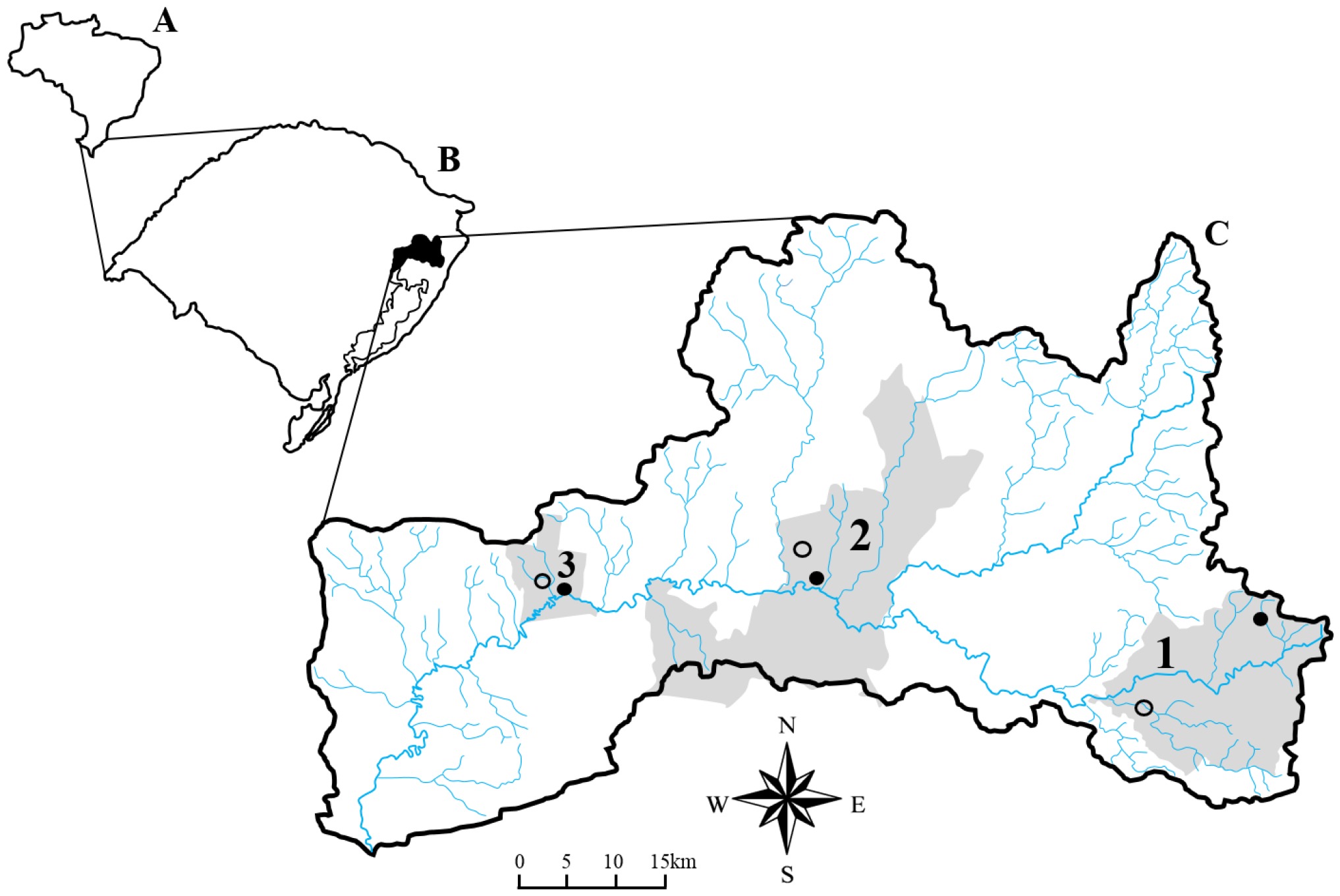Abstract
The present study evaluated the genotoxic effects of the atmospheric air on Tradescantia pallida var. purpurea in urban areas with different intensities of vehicular traffic and in riparian forest fragments in the Sinos River Basin (Rio Grande do Sul, Brazil), considering the influence of climatic conditions prevailing in these environments. Bimonthly, from May 2012 to March 2013, cuttings with flower buds were exposed for 8 h in urban and riparian forest environments in the municipalities of Caraá, Taquara and Campo Bom in the upper, middle and lower sections, respectively, of the Sinos River Basin. Simultaneously, negative controls were made and climatic data were recorded. Micronuclei (MCN) frequencies were determined in young tetrads of pollen mother cells and expressed as MCN/100 tetrads. Significantly higher MCN frequencies were observed in buds exposed in urban and riparian forest environments in Taquara (up to 7.23 and 4.80, respectively) and Campo Bom (up to 4.90 and 4.23, respectively) than in buds exposed in Caraá (up to 2.90 and 2.50, respectively), in the majority of samplings, and in relation to the negative control (up to 1.93) in all months. Over the course of the period monitored, there were significant variations in MCN frequencies at all sampling points, with the exception of the urban environment in Caraá. For the urban environments, relation between the MCN frequency, vehicular traffic and mean temperature was observed. For the riparian forest fragments, there was no association between MCN frequency and climatic factors. Tradescantia pallida var. purpurea can be considered a useful tool to point out areas with increased atmospheric pollution, since the exposure of plants under severe climatic conditions is avoided to minimize their negative influence on the formation of micronuclei.
Keywords:
abiotic factors; vehicular emissions; bioindicator; environmental quality; micronucleus

 Thumbnail
Thumbnail
 Thumbnail
Thumbnail

